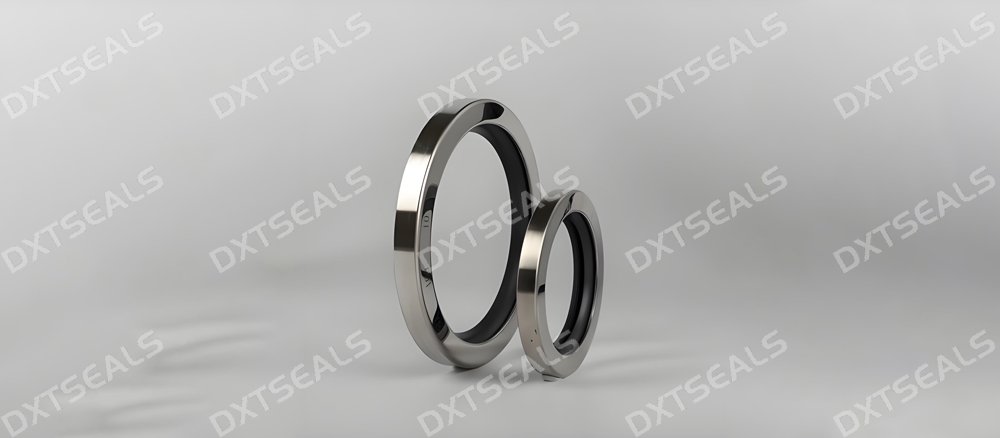
Shaft seals play a critical role in ensuring the reliable operation of industrial equipment by preventing the leakage of lubricants and ingress of contaminants. However, seal leakage remains one of the most common issues in pumps, motors, compressors, and gearboxes.
In this article, we analyze the primary causes of shaft seal leakage, and share effective solutions to prevent and resolve these issues—ensuring better equipment reliability and reduced maintenance costs.
🔍 Common Causes of Shaft Seal Leakage
1. Improper Installation
Incorrect installation, such as misalignment, uneven compression, or failure to use proper lubrication during assembly, can quickly lead to early seal failure.
Solution:
-
Follow manufacturer installation guidelines precisely.
-
Use appropriate tools to avoid damaging the sealing lip.
-
Ensure proper centering of the shaft and seal.
2. Shaft Surface Damage or Wear
A scratched, grooved, or rough shaft surface can damage the sealing lip, leading to leakage.
Solution:
-
Inspect the shaft for wear or corrosion.
-
Use a shaft repair sleeve if necessary.
-
Ensure the shaft surface roughness meets seal design standards (usually Ra 0.2–0.8 μm).
3. Excessive Pressure or Speed
Seals are designed for specific pressure and speed limits. Exceeding these limits may cause seal deformation or material breakdown.
Solution:
-
Select seals rated for high-speed or high-pressure applications.
-
Consider using mechanical seals or multi-lip shaft seals in demanding environments.
4. Chemical Incompatibility
If the seal material is not compatible with the operating fluid, swelling, hardening, or cracking may occur.
Solution:
-
Match seal material (e.g., NBR, FKM, PTFE) with the chemical properties of the fluid.
-
Consult chemical compatibility charts or request technical support from suppliers like DXTSEALS.
5. Thermal Degradation
Excessive heat can cause hardening, shrinkage, or cracking of the seal lip, especially in high-speed or poorly ventilated environments.
Solution:
-
Use high-temperature-resistant materials such as FKM or PTFE.
-
Improve cooling or ventilation near the seal area.
6. Contamination or Abrasives
Ingress of dirt, dust, or metal particles can cause abrasion and lead to sealing surface damage.
Solution:
-
Use seals with dust lips or additional protective features.
-
Ensure proper filtration of lubricants and regular cleaning of the seal area.
7. Seal Aging and Material Fatigue
Over time, exposure to dynamic motion, pressure cycles, and environmental stress can lead to hardening, cracking, or permanent deformation.
Solution:
-
Follow regular inspection and replacement schedules.
-
Use high-performance, long-life sealing materials when applicable.
✅ Summary Table: Common Problems & Fixes
| Cause | Symptom | Solution |
|---|---|---|
| Misalignment | Early leakage | Re-align shaft, correct installation |
| Shaft wear | Scored lip contact area | Polish or repair shaft |
| Overpressure | Seal blow-out or extrusion | Upgrade to pressure-rated seal |
| Chemical attack | Swelling, brittleness | Use compatible material |
| Overheating | Hard, cracked seals | Improve cooling, use FKM/PTFE |
| Dirt intrusion | Abrasive wear | Add dust lip or guard |
🛠 Recommended Seal Selection by Application
| Industry | Challenge | Suggested Seal Type |
|---|---|---|
| Automotive | High-speed, oil exposure | FKM rotary shaft seals |
| Mining | Mud, sand, abrasive dust | Multi-lip seals with dirt exclusion |
| Chemical | Fluid compatibility | PTFE or FFKM seals |
| Wind Power | High torque, low temp | Grease-lubricated shaft seals with cold-resistant material |
🏭 Why Choose DXTSEALS Shaft Seals?
At DXTSEALS, we provide a full range of high-performance shaft sealing solutions designed for demanding industrial conditions. Our seals are manufactured with premium materials, precision CNC technology, and meet global standards such as DIN, ISO, and API.
Whether you need standard shaft seals, custom designs, or technical support, we’re here to help improve your sealing system reliability.
🔗 Explore Our Shaft Seal Products
📌 Conclusion
Shaft seal leakage can lead to increased downtime, equipment wear, and operational losses. By understanding the root causes—from installation errors to material mismatch—you can implement effective solutions and choose the right seal for your application. Partnering with an expert supplier like DXTSEALS ensures optimized performance and long-term sealing success.
